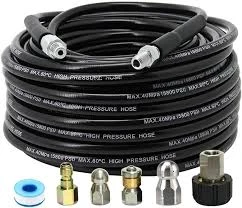brake tubing
Understanding Brake Tubing Importance, Materials, and Maintenance
Brake tubing is a critical component of a vehicle's braking system, playing a vital role in ensuring safety and efficiency while on the road. It is responsible for transferring hydraulic fluid from the brake master cylinder to the brake calipers, enabling the vehicle to slow down or stop effectively. Understanding the importance of brake tubing, the materials used, and the maintenance required can help vehicle owners make informed decisions and ensure their cars remain in optimal condition.
Importance of Brake Tubing
The braking system is one of the most essential systems in any vehicle. When a driver presses the brake pedal, hydraulic pressure is generated in the master cylinder. This pressure travels through the brake tubing to the calipers at each wheel. The brake calipers then apply force to the brake pads, which clamp onto the rotors, effectively slowing down the vehicle. Any issues with brake tubing can lead to a loss of pressure, resulting in brake failure, which can have catastrophic consequences.
Properly functioning brake tubing ensures that the braking system responds quickly and efficiently, providing drivers with a sense of control and safety. Regular inspections of brake tubing can help in identifying potential issues before they become significant problems, thereby enhancing overall vehicle safety.
Materials Used in Brake Tubing
Brake tubing can be made from various materials, each with its benefits and drawbacks. The most common materials used for brake tubing include
1. Copper-Nickel Alloy This material is widely used for brake lines because it is highly resistant to corrosion and is less prone to cracking. Copper-nickel tubing maintains flexibility, making it easier to work with during installation.
2. Stainless Steel Known for its durability, stainless steel tubing offers excellent resistance to corrosion. It is often used in performance vehicles where high levels of pressure are a requirement. However, stainless steel tubing can be more challenging to work with due to its rigidity.
3. Plastic (Polyethylene) While not as common, plastic tubing can be used in certain applications. It is lightweight and resistant to corrosion, but it may not hold up under high pressure as well as metal tubing.
brake tubing

4. Rubber Hoses While typically used for flexible sections, rubber hoses are also part of the overall brake system. They are often found in areas where movement is necessary, but they require regular inspection, as they can wear out over time due to heat and exposure to various environmental elements.
Maintenance of Brake Tubing
Regular maintenance of brake tubing is crucial for ensuring the longevity and safety of the braking system. Here are some essential maintenance tips
1. Visual Inspections Regularly inspect brake tubing for visible signs of wear, corrosion, or damage. Look for any cracks, leaks, or bulging areas that might indicate a problem. If you see any issues, it’s essential to address them immediately.
2. Check Fluid Levels Brake fluid is a vital component of the braking system. Regularly check the brake fluid levels and ensure they are within the recommended range. Low fluid levels can indicate a leak in the system, potentially affecting the performance of the brake tubing.
3. Flush Brake Fluid Over time, brake fluid can absorb moisture, leading to corrosion and reduced braking efficiency. Periodically flushing and replacing the brake fluid can help maintain the integrity of the braking system and the tubing.
4. Seek Professional Assistance If you experience any issues with your brakes or notice anything unusual, it is always advisable to consult a qualified mechanic. They can perform a thorough inspection and ensure that all components, including the brake tubing, are functioning correctly.
Conclusion
Brake tubing is an integral part of the braking system, and understanding its importance, materials, and required maintenance can significantly contribute to vehicle safety. By prioritizing regular inspections and proper care, car owners can ensure their braking systems remain efficient and reliable, ultimately protecting themselves and others on the road. Remember, when it comes to brakes, prevention is always better than cure.
-
Ultimate Spiral Protection for Hoses & CablesNewsJun.26,2025
-
The Ultimate Quick-Connect Solutions for Every NeedNewsJun.26,2025
-
SAE J1401 Brake Hose: Reliable Choice for Safe BrakingNewsJun.26,2025
-
Reliable J2064 A/C Hoses for Real-World Cooling NeedsNewsJun.26,2025
-
Heavy-Duty Sewer Jetting Hoses Built to LastNewsJun.26,2025
-
Fix Power Steering Tube Leaks Fast – Durable & Affordable SolutionNewsJun.26,2025

